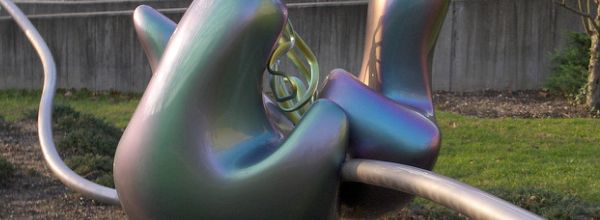Polysome Profiles: What You Need to Know

Has your supervisor asked you to do a polysome profile? Are you attempting them but running in to problems? This article will help explain what they are, the basics of the protocol and provide some helpful tips (including some things that I wish I had known when I first started out).
Polysome Profiling: The Basics
Polysome profiles provide a snapshot of the activity of the translational machinery by freezing translation in the cell. It lets you separate transcripts in to two distinct populations: efficiently translated transcripts (which are associated with polysomes), and poorly translated/translationally repressed transcripts (which are associated with the ribosomal subunits and monosomes).
You can make this technique more powerful by combining it with downstream applications. For example, you can separate the gradient in to fractions as the absorbance is being read to analyze associations with various translational components. From these fractions you can:
- Extract RNA and use a Northern blot or qRT-PCR to reveal the translational status of particular transcripts
- Perform RNA-sequencing to study the translational status of the global transcriptome and/or
- Isolate proteins from the fractions to examine the proteins associated with the translational complexes
How Do They Work?
In essence, you perform polysome profiling by examining translational components and complexes after separation over a linear sucrose density gradient (~10-50%). You then graph the absorbance of the gradient at 254 nm to view translational activity. Using this, you can resolve peaks for the ribosomal subunits (40S, 60S), monosomes (80S), and polyribosomes (polysomes – which are RNA transcripts bound by more than one ribosome).
A basic outline of the procedure is:
- ‘Freeze’ translation inside cells using cycloheximide. Cycloheximide inhibits translation in eukaryotic cells by binding to the 60S ribosomal subunit and inhibiting translation elongation.
- Lyse cells (in the presence of protease inhibitors and RNase inhibitors).
- Centrifuge the cell extract through the gradient causing translational components to separate based on density.
- Use a UV detector to measure absorbance across the gradient at 254 nm and separate the gradient in to fractions.
What are the Problems?
Polysome profiles are notoriously tricky. This is due to a number of reasons. RNA can rapidly degrade and you need to preserve both the RNA and protein complexes to examine the translation components. You cannot disturb the sucrose gradient – even though you have to pour the gradient, move it around, layer on the cell lysate and collect fractions. Finally, even the equipment can give you trouble. For example, the fractionation tubing can get blocked or introduce bubbles in to your carefully poured gradient.
Each of these can wreck your experiment and the end result, but you probably won’t discover it until the end of the protocol. By that time, you will probably have wasted a lot of your time, reagents and maybe precious cell samples. This makes them incredibly frustrating!
Tips to Stop The Problems
Protect your RNA and protein:
- After incubating your cells with cycloheximide, keep everything ice-cold
- Add RNase inhibitors and protease inhibitors to your lysis buffer and sucrose solutions
- Filter-sterilize your cycloheximide (after you dissolve it) and sucrose solutions (before adding the RNase inhibitors and protease inhibitors) using 0.2 mm filters
With your sucrose gradients:
- Be careful not to introduce any bubbles when you pour them
- Keep steady hands when handling them
Check your fractionation equipment:
- Flush the fractionation equipment with millipore water or 70% ethanol before you use it to check for blockages in the tubing, etc (you should also flush again after you have finished to make sure everything is clean for the next person!)
- Check there are no bubbles in your chase solution (the solution that will push your gradient through the absorbance reader) – otherwise they can float up in to your gradient and through it, mixing up the separation of the translational complexes
- The no bubbles rule includes the needle that pierces the gradient tube. You can check there aren’t any by pushing the chase solution right through so you see that it comes out of the tip of the needle
Use freshly made cycloheximide:
- Once you’ve dissolved it, only keep cycloheximide for one month, max. Store it in the freezer when you’re not using it.
Save yourself some time on the day of the experiment by pre-pouring your gradient:
- Make 5 different sucrose concentrations ranging from the lowest concentration of your gradient to the highest. Add a layer of the highest concentration to the gradient tube, then freeze at -80°C (10 minutes or so should be enough), add a layer of the next concentration down and freeze again, keep repeating until you have frozen each layer. Keep the gradient in the -80°C freezer and then put it at 4°C the night before you want to use it – the layers will equilibrate.
I hope these tips help you and good luck!
For Further Reading
- Abdelmohsen K. (2012) Modulation of Gene Expression by RNA Binding Proteins: mRNA Stability and Translation. Binding Protein. Kotb Abdelmohsen (Ed.), ISBN: 978-953-51-0758-3, InTech, DOI: 10.5772/48485.
- Morello LG. et. al. (2011) The NIP7 protein is required for accurate pre-rRNA processing in human cells. Nucleic Acids Research. 39 (2): 648-665.
1 Comments
Leave a Comment
You must be logged in to post a comment.
Great article on the basics. There are also gradient-maker machines that really expedite the process of pouring your gradients, and it’s more consistent too! Takes about 5min to make instead of the freezing/layering that can take a couple hours.